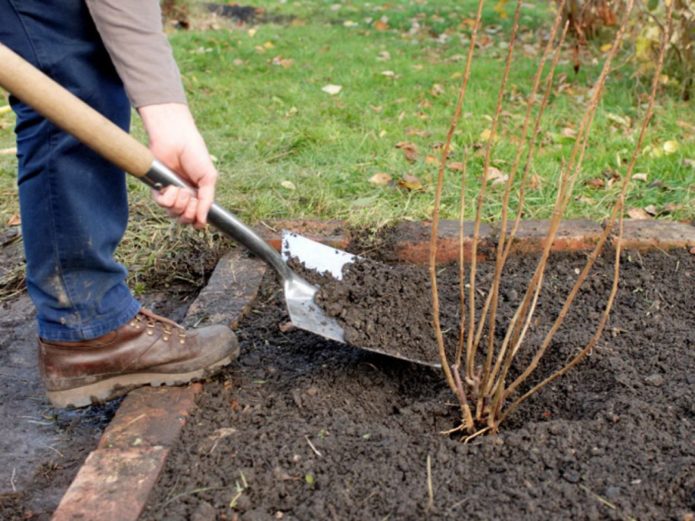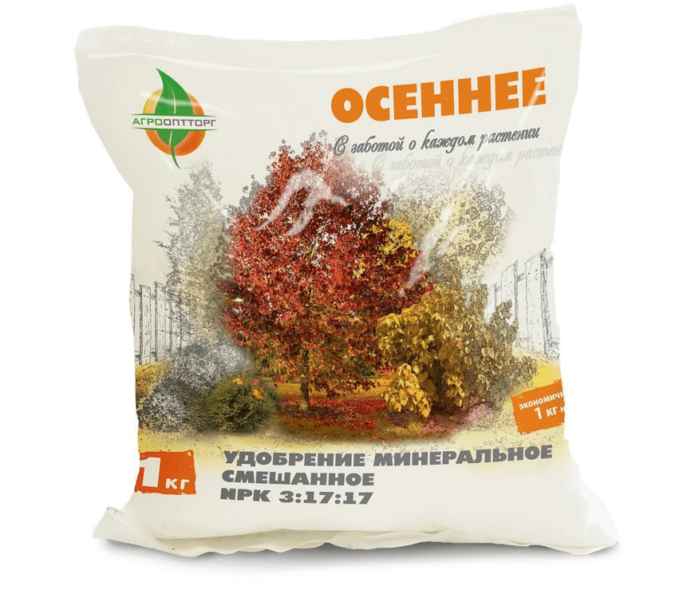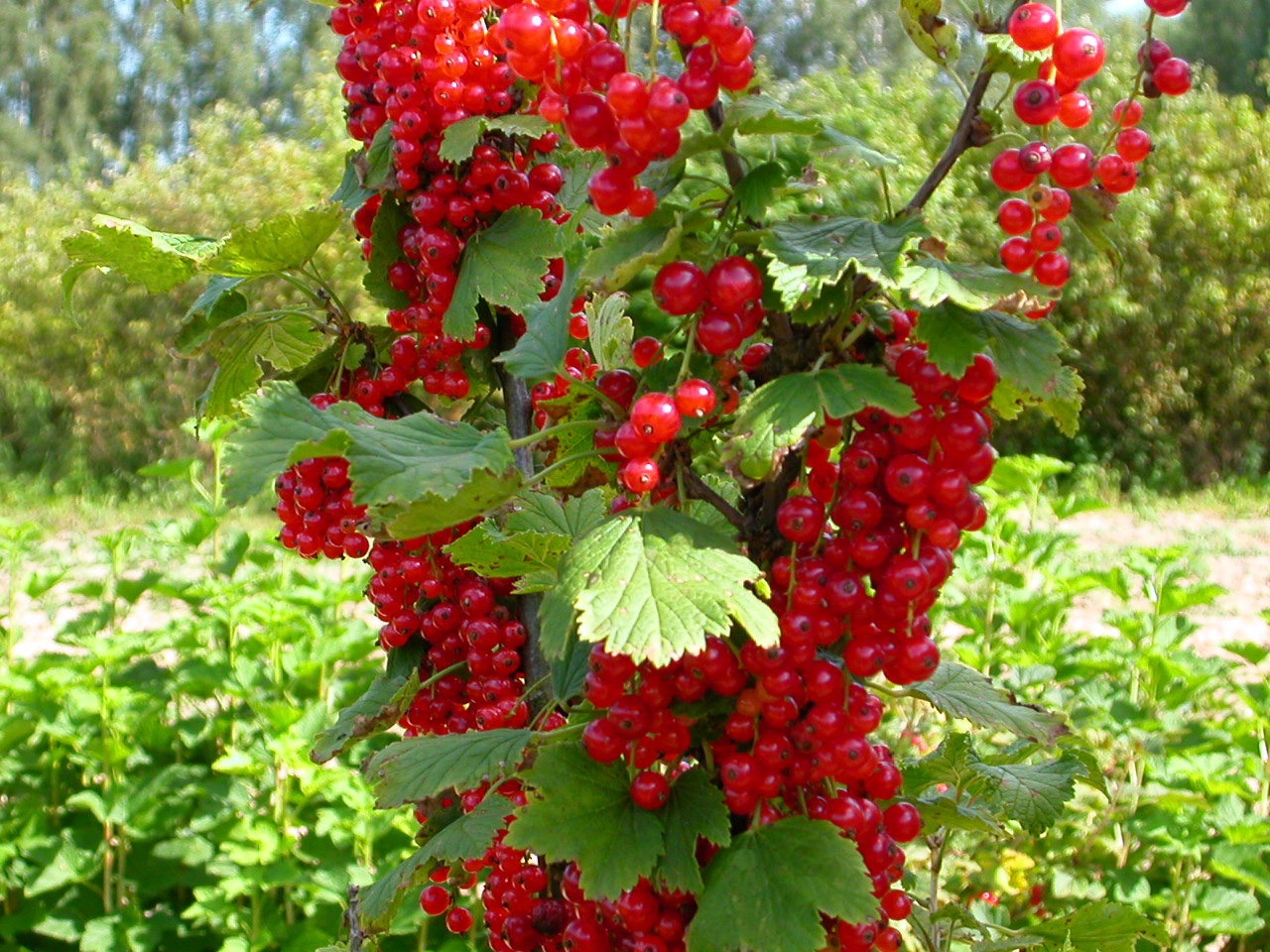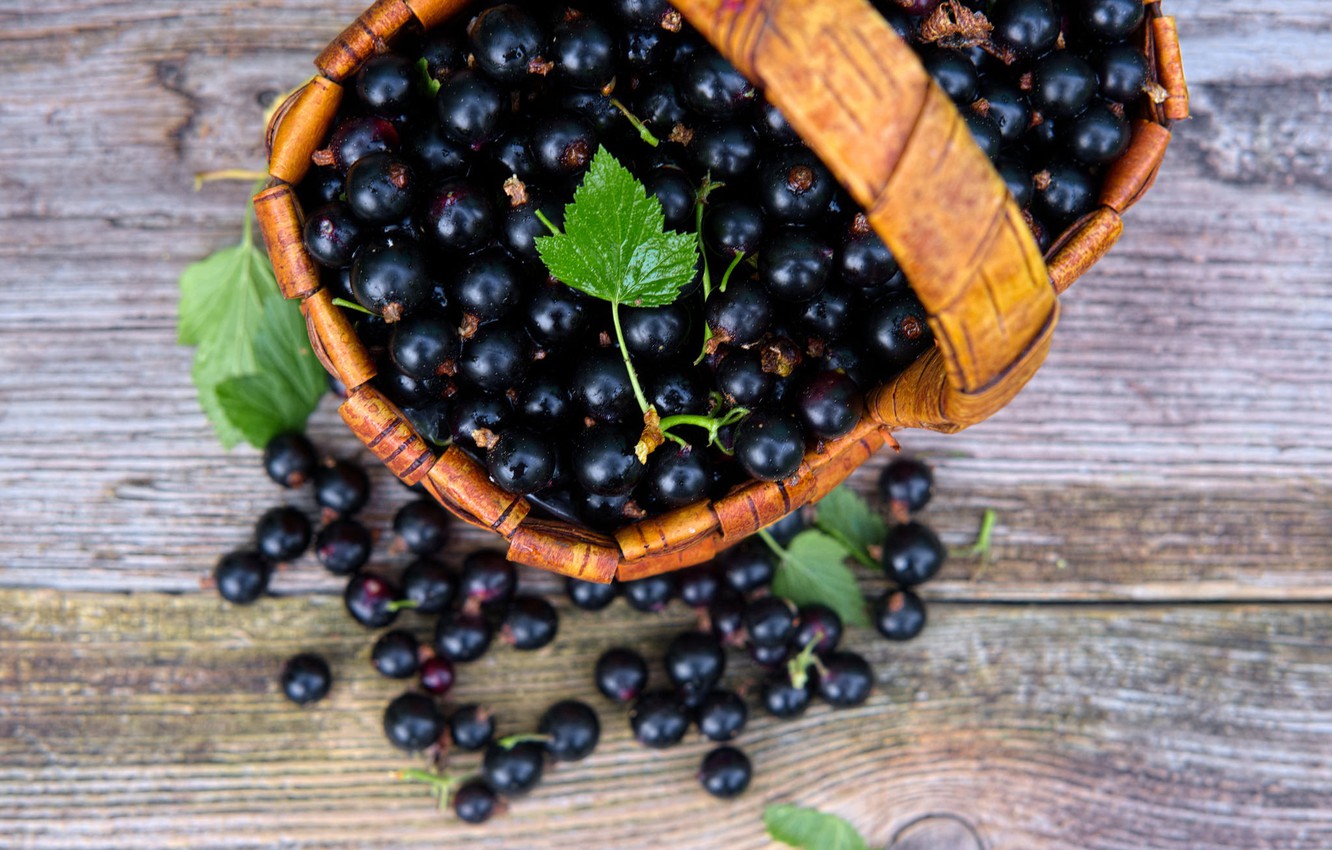Top dressing of currants in autumn is a guarantee of a good harvest for the next year. Organic and inorganic fertilizers will provide nourishment to the roots immediately after the snow melts, buds will form faster. In addition, strong bushes will better resist diseases and insect pests, which are also activated in the spring.
Content
Autumn feeding: what is it for

The thicker the stem of the currant and the more sugars it contains, the more likely it is to survive the cold winter.
The main purpose of fertilizing after summer fruiting is to restore the strength of the bush and provide it with a comfortable winter.
Balanced feeding is capable of:
- increase the nutritional value of the soil;
- strengthen the root system of the bush;
- stimulate the early laying of the kidneys;
- shorten the growing season;
- increase the number of berries and improve their taste;
- protect the plant from pests and common currant diseases.
During dormancy, plants absorb nutrients better; in the spring, the necessary components will come to the roots gradually, along with melt water. When the soil is completely thawed, the bushes will quickly move into growth, young shoots will be strong and viable.
Top dressing after the end of fruiting is aimed not at the current, but at the future harvest. Many nutrients are aimed at the development of roots and green mass, they are needed to restore the bush, but they are poorly absorbed during the active setting and ripening of berries.
How often to fertilize in the fall
Fruiting of most red and black currant varieties ends in July and early August. However, autumn feeding is postponed until September, when the garden begins to prepare for winter. At this time, the currants most need potassium and phosphorus. Substances restore the root system, stimulate early bud formation, strengthen the immune system. In the spring, nitrogenous fertilizers will be needed to accelerate the development of green mass and the growth of new shoots.
Young bushes do not need abundant feeding. If you planted currants in autumn, the supply of nutrients will be enough for them for another 1-2 years. But plants that bear fruit for 3-4 years need to be fed annually. Their strength is depleted, their own resources are not enough, with a lack of nutrients, the berry will shrink. Adult bushes must be fed every 4 weeks, especially large-scale events occur in autumn.

If autumn promises to be dry, then the currants must be watered abundantly so that the earth is saturated to a depth of at least 50 cm
In the middle lane, they begin to cook currants for winter in early September. Top dressing is carried out once, if it is planned to introduce minerals and organics, the process can be divided into 2 stages. Young specimens can be lightly fed with humus or chicken droppings; adults cannot do without balanced mineral mixtures.
In the northern regions, preparations for winter begin earlier, the term for applying the main portion of fertilizers is until the end of August. In the south, late-ripening varieties can also bear fruit in September, so autumn fertilizers are laid in early October.
The composition of the soil also affects the fertilization schedule.Sandy loam needs an annual application of nutrients, loamy is enough to fertilize 1 time in 2-3 years. Fertile black soil can be renewed every 3 years.
Fertilizing for currants in spring, summer and autumn:https://flowers.bigbadmole.com/en/yagody/smorodina/podkormka-smorodinyi-vesnoy.html
Correct feeding of currants: step by step instructions
You need to apply root dressing after abundant watering. If the soil is not moistened, there is a risk of burning the currant roots. Pour 10–20 liters of water under each bush.
In order for the nutrients to penetrate to the roots faster, a groove is dug around the bush, into which the nutrient mixture is poured. The depth of the furrow is 20–30 cm. After making the holes, they are covered with soil and covered with a layer of peat.

After applying top dressing, the soil is well loosened and mulched with peat so that a hard crust does not form on the surface
For root top dressing, a phosphorus-potassium mixture is ideal. Take 2 tbsp for a bucket of water. l. ammophos containing 12% nitrogen and 52% phosphorus. The granules are pre-dissolved in hot water. Add 1 tbsp to the solution. wood (preferably birch) ash and mix well with a stick. 2 liters of liquid fertilizer are poured under the bush. If the currants are old, increase the portion to 5 liters.
If the plants lack potassium, it is better to add ash from burning deciduous trees to the nutrient solution. Coniferous ash contains an increased amount of phosphorus.
An alternative option is urea-based mineral feeding. A bucket of water will need 0.5 tbsp. l. urea or nitrate, 1 tbsp. l. potassium sulfate, 2 tbsp. l. superphosphate. The granules are stirred until complete dissolution. After abundant watering, 1–2 liters of nutrient solution is applied under each bush. For actively fruiting bushes, the portion is doubled. Then the soil under the bush is loosened and mulched.
The use of organic fertilizers also gives good results. It is better to combine them with mineral complexes. First, rotted humus or compost is introduced under each bush, then the plantings are spilled with a superphosphate solution (2 tablespoons per bucket of water).
Top dressing with superphosphate is also popular when growing fruit trees, because most trees grow for many years in one place, gradually drawing nutrients from the soil:https://flowers.bigbadmole.com/en/uhod-za-rasteniyami/podkormka-plodovyh-derevev-osenyu.html
Experienced gardeners recommend updating the soil with humus. It is better to add it in 3 steps. The first time fertilization is carried out in September, digging up the soil well and spreading manure around the bush at a distance of 1 m around the perimeter. The second application is done a month later, the third - during the December thaw. After the introduction of humus, the soil is abundantly mulched with peat. Such nutrition has a beneficial effect on old bushes, stimulating abundant fruiting for the next year.

You can soak bread in water with grass and put it under a bush in an earthen furrow, after letting the whole mass stand and ferment - the yeast releases carbon dioxide, which is necessary for plants
It is also useful to feed currants in the fall with chicken droppings: dry or diluted in water. With the dry method, 1 kg of manure is introduced under the bush, thoroughly mixing it with the soil. Digging depth - at least 15 cm. For irrigation, 1 part of the manure is diluted in 15 parts of water. After adding organic matter, it is useful to feed the bushes with minerals: solutions from 2 tbsp. l. superphosphate and 1 tbsp. l potassium salt per 10 l of water. A portion for each bush is 1–2 liters of ready-made nutrient solution. You can apply mineral fertilizers immediately after organic matter, but experienced gardeners recommend taking a break of 1-2 days.
Kitchen waste such as potato peelings will be an additional recharge. A hole is dug around the bush, the remains of potatoes are laid in it and covered with soil. You can prepare a nutritious infusion by pouring 10 liters of boiling water over a dry peel (1 liter). Currants are very responsive to the starch contained in potatoes, it has a positive effect on the taste of berries.
Store-bought dry starch is not suitable for fertilization.
Sowing green manures, saturating the soil with nitrogen, potassium, phosphorus, will help to improve the composition of the soil. In early summer, lupine, peas, and alfalfa are sown around the bushes. In the fall, dug up the green mass, trying not to damage the roots of the currant. The soil is watered and mulched abundantly. Nutritious greens not only fertilize the bushes, but also serve as additional protection for the roots.
For novice gardeners who are afraid to make nutritional mixtures on their own, ready-made complexes that can be bought in specialized stores are suitable. They contain the same components: superphosphate, potassium salt, urea in the right proportions. One of the best options is the Osennee complex fertilizer, which is well suited for fruit and berry crops, including currants and gooseberries; it is bred in accordance with the instructions on the package. The balanced composition dissolves easily in water and is quickly absorbed. The only drawback of the finished mixture is the relatively high price. Fertilizing currants in the fall with fertilizers will allow you to get a good harvest for the next year.
In order for your garden to delight you with its bountiful harvest, you need to constantly look after the plants: fertilize the land, remove weeds, exterminate pests. Fitoverm will help to get rid of various insects:https://flowers.bigbadmole.com/en/uhod-za-rasteniyami/udobreniya/instrukciya-po-primeneniyu-fitoverm-otzyvy-potrebiteley.html

The content of phosphorus and potassium in the fertilizer increases the proportion of vitamins and sugars in fruits, promotes the full ripening of shoots and generally improves overwintering of plants
In addition to root dressings, nutritious sprays are useful. Currant leaves and stems absorb valuable substances much faster, moreover, foliar feeding serves as additional protection against parasites. The diluted mixture is poured into a spray bottle and branches and stems are abundantly treated. Such spraying can be combined with standard fertilizing. For example, organic matter is introduced under the bush, and currants are sprayed on the leaf with a ready-made potassium-phosphorus complex.
At the same time, plants are treated against pests. The bushes are sprayed with ready-made compositions such as "Akarin", "Fitoverm", "Fufanon". They stimulate the defenses of plants, increase resistance to infections and combine well with nutritional complexes.
Video: a convenient way to fertilize
Video: comprehensive care for black currants in autumn
Reviews
I have a bad land, so to speak, poor. You have to constantly feed. If a yellow edging appears on the leaves of the currant, then there is not enough phosphorus and potassium. This is not the most serious problem, I fix it simply. I make a small groove around the bush and water it with a solution of phosphorus-potassium fertilizer. Phosphorus will increase the size of the berry itself, and potassium will give sweetness. Be careful when watering currants, its roots do not go deep into the ground, you can easily wash them, and this will seriously affect the fruits and growth of the bush.
In the spring I don't fertilize with anything - it's no use. Currant lays flower buds in autumn. Therefore, for the whole summer, I put mowed grass, weeds, tomato leaves after scraps under the blackberry. Then I put the potato tops there after digging the potatoes. And after the fall of leaves I spread manure under the bushes, not sparing it. And currant harvests are notable!
I treat in autumn and spring with Bordeaux mixture for diseases or Topaz. I fertilize with nitrophobic in the fall, in the spring I breed and fertilize with chicken or cow or horse droppings. Sometimes I buy Giant-berry. Berry giant is a very good long-acting fertilizer.
As for fertilizers, I read somewhere (I can't remember the link to the source) that plants themselves fertilize the soil with their own leaves. In the fall, the plants saturate the leaves with the elements they want to fertilize the bud. Then the leaves fall off, mix with the soil and rot in it.Thus, leaving in the soil everything that the plant has stored in the leaves. Based on this, I stopped removing leaves from my garden. More precisely, I clean only when the grass begins to germinate. And then I do it superficially so that the garden looks beautiful and at the same time the leaves remain. And he also noticed an increase in productivity.
Preparing currants for winter is not limited to feeding. Bushes need to be cut by removing diseased branches and excess shoots, digging in the soil and mulching. Properly prepared berries will endure the winter well and will delight you with a bountiful harvest for next year.


